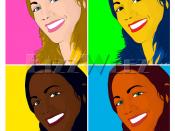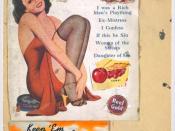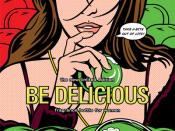Pop Art is Alive and Kicking
In the post-war era of the 1950's there was a movement gaining popularity in the art world. Artists could not ignore the rapidly changing world they lived in. Post-war prosperity fueled an age of consumerism and commercialism and art began to celebrate this popular commercial culture. Advertisements, billboards, television, film, comic books, newspapers, magazines, and even automobile styling inspired artists. This movement was described by Richard Hamilton, as "Popular, Transient, Expendable, Low Cost, Mass Produced, Young, Witty, Sexy, Gimmicky, Glamorous; and Big Business" (qtd. in Kaizen 28). This easily accessible, cool, exciting and relatable phenomena became to be known as Pop Art. Its influence was far reaching and still influences our modern day culture although fifty years later.
The western industrial societies during 1950's were undergoing a transformation. By 1953 fifty percent of Americans had televisions and commercial advertising was widespread. Rock and Roll was the music of the time and fast food was being born in the name of McDonalds and Kentucky Fried Chicken.
Pop Art fed off of this shift in society and in doing so rejected the supremacy of 'high art'. By overthrowing tradition, they attempted to bring art back to the material realities of everyday life. As it gained popularity it closed the gap between 'high' and 'low' art. Colin Self described it as the first truly popularist, democratic art movement. "Pop Art was the first art movement for goodness knows how long, to accept and reflect the world in which it lives. Before Pop all Art hid behind being 'Arty'. Art had reached such a state of insincerity and pretentiousness, Pop was a real revelation" (qtd. in Bigham 18).
Pop Art descended from Dada, an 'anti-art' movement in the 1920's which aimed to destroy the traditional values of art.


